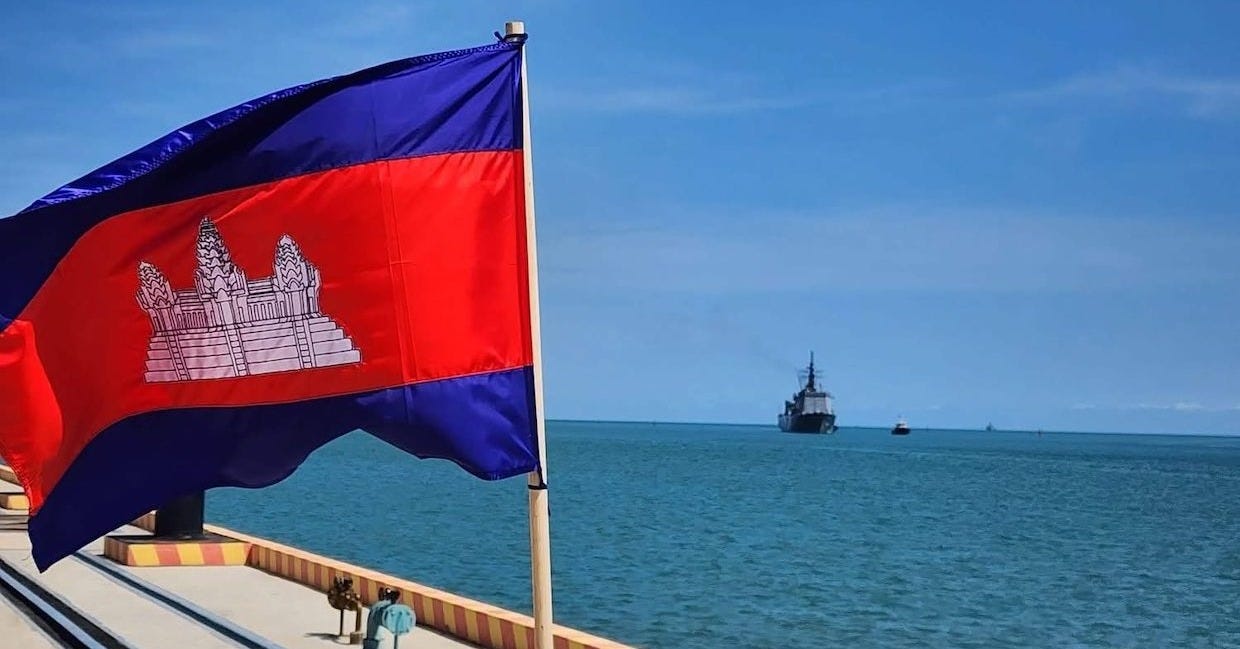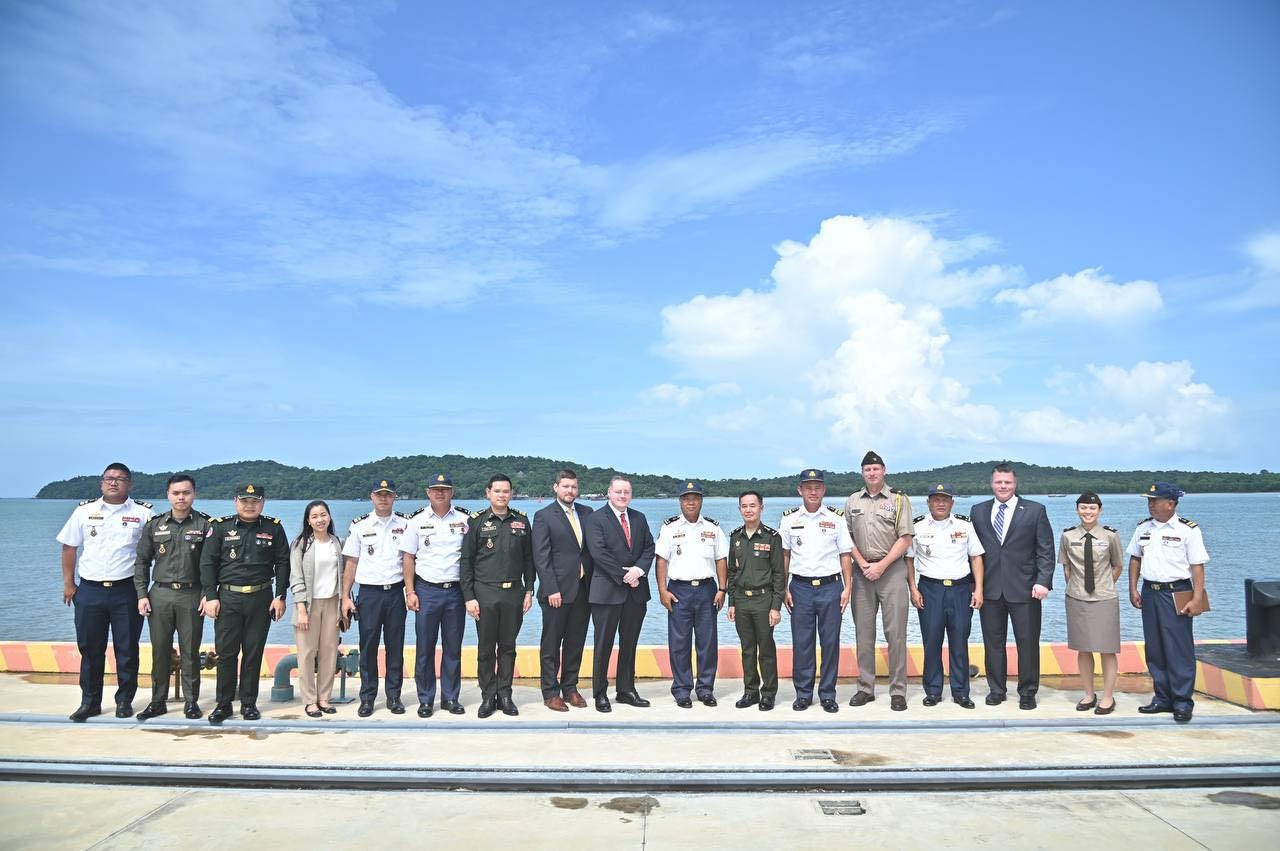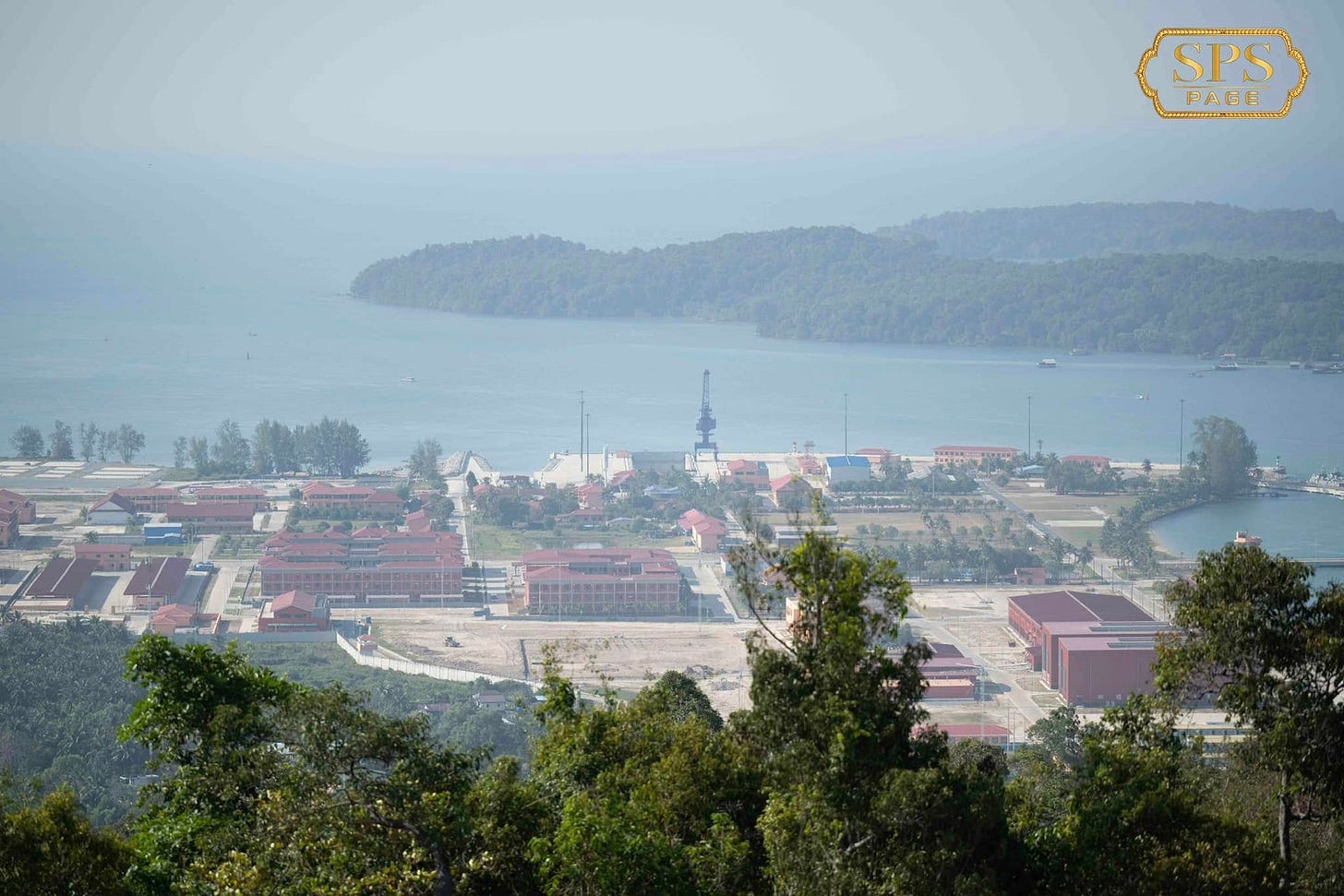Another base, another ‘vector’ for China, US admiral says
China's presence at Cambodia's Ream naval base may be small, but it provides another perch in an important region, US Pacific Fleet's commander says.

Cambodia has welcomed several navies to its Ream naval base since its reopening in April.
The visits have eased concerns that China would have exclusive access after funding the base’s renovation.
But China still has a presence there, giving it another outpost in an important region.
BANGKOK — Cambodia has thrown open the berths at Ream naval base, hosting several navies since it reopened in early April after three years of renovations funded by China.
The US and other countries have worried that China would have exclusive access to Ream since reports of such an arrangement emerged in the late 2010s. Cambodian officials denied that would happen, frequently citing their country’s constitutional prohibition on foreign bases.
Cambodia’s willingness to host foreign forces at Ream has eased some of those concerns, but even if China’s access is not exclusive, its presence there gives it the benefit of having another outpost from which it can conduct and sustain operations in the South China Sea, according to the commander of the US Navy’s Pacific Fleet.
“It provides an additional basing perspective operationally for the [Chinese military] — from a sustainment perspective, conceivably from a repair perspective, and from a volume perspective — in and around the South China Sea,” Adm. Stephen Koehler said at a conference hosted by the Center for Strategic and International Studies, a US think tank, on June 17.
China has made sweeping claims in the South China Sea, through which one-third of global shipping passes, connecting East Asian economies to trading partners and energy suppliers in the Middle East, Africa, and Europe. Beijing has aggressively pursued those claims, often clashing with the Philippines and other claimants. China also has major military bases on the island province of Hainan in the northwest corner of the sea and smaller outposts farther south on islands it has occupied.
China’s military presence at Ream is expected to be small, but Koehler’s comments reflect a concern that the base offers a perch near important waterways connecting the Indian and Pacific oceans where China can monitor activity across the region. “Work out of that area is another vector and another base further south in the South China Sea, which gives them opportunity and access further south from Hainan and all of the other areas that China has worked on,” Koehler said.
Cambodian needs, Chinese interests

Ream is the largest of Cambodia’s two naval bases and the only one with direct access to the sea. Renovations since 2022 have expanded the base and added facilities capable of servicing larger ships as well as “various logistics infrastructure,” Cambodia’s national news agency said in April. The harbor has also been dredged to depths of 26 feet to 36 feet — deep enough for many warships but not larger vessels like aircraft carriers.
Cambodia has sought to improve its military capabilities in response to security concerns around the Gulf of Thailand, including transnational crime and disputes with its larger neighbors, Thailand and Vietnam, and it stands to benefit most from the upgrades at Ream, which has less value for China than its bases in the South China Sea, according to Rahman Yaacob, a research fellow at Australia’s Lowy Institute think tank who visited the base in mid-2024.
“It seems the base will serve the Cambodian navy more than the Chinese navy,” Yaacob said in December, pointing to a Chinese-built command post and coastal surveillance systems that will improve Cambodia’s ability to monitor the area and direct its forces. China, which is seeking greater political and military influence in Southeast Asia, is also a major source of military aid to Cambodia and is providing an air-defense system for the base and two specially built corvettes, which will boost Cambodia’s fleet of decades-old patrol boats.
China could benefit in other ways, however. Yaacob said sensors installed at the base could gather intelligence for the Chinese military, noting that Vietnam is concerned about Chinese radars tracking air traffic as far north as Ho Chi Minh City. A Chinese official told The Washington Post in 2022 that the base would host a ground station for the BeiDou satellite navigation system, which has commercial and military uses.
Returning to Ream
Cambodia’s secrecy about developments at Ream over the past few years only deepened US concerns. The base had regularly hosted foreign navies, but in early 2017, Cambodia abruptly ended most military cooperation with the US, including the Angkor Sentinel exercise held annually since 2010. Phnom Penh offered little explanation for events that followed at Ream, including the demolition of US-funded buildings, and limited or denied access to official visitors. A US official said in July 2022 that “the lack of transparency has been extraordinary.”
Chinese ships, including corvettes like those being given to Cambodia, had been the only foreign forces at Ream since December 2023, but several navies have visited following the base’s formal reopening on April 5. Two Japanese minesweepers made a port call from April 19 to April 22, a Vietnamese patrol boat began a three-day visit on April 27, and three Russian warships made an official visit from April 28 to May 1. On May 12, a Chinese amphibious ship arrived for the annual Golden Dragon exercise, which was the largest edition so far and the two countries’ first joint exercise at the new facility.
At the conference, Koehler said it was a “positive” sign “that at least, I think, certainly more than symbolically Cambodia has said Ream is open for other shipping to come in,” adding that the Japanese ships had arrived “very quickly.” (Cambodia said in December that Japan’s navy would be the first visitor.)
The US Navy ended its eight-year absence in Cambodia in December, when a littoral combat ship visited Sihanoukville, about 30 miles west of Ream, and is now set to return to Ream. Following a meeting between US and Cambodian defense officials at the Shangri-La Dialogue in Singapore on May 31, the Defense Department said a US Navy ship would visit and conduct “maritime training” at the base “later this year” and that Secretary of Defense Pete Hegseth would visit while the ship was there.
‘Every country gets a vote’

Numerous US defense officials have visited Cambodia since early 2024 — including Hegseth’s predecessor last summer and the head of US Indo-Pacific Command in December — for meetings that have included discussions about reviving military exchanges ended after 2017. In February, the Cambodian military’s commander-in-chief asked to resume joint exercises, such as Angkor Sentinel, while meeting the commander of the US Army in the Pacific in Phnom Penh.
The most recent US visitor was Andrew Byers, deputy assistant secretary of defense for South and Southeast Asia, on June 24 and 25. The US Embassy said Byers and Cambodian officials discussed “the next steps in strengthening” military ties after the Singapore meeting and plans for Hegseth’s trip. Byers also visited Ream and “toured key facilities” there, according to Cambodia’s national news agency. “This was a very productive visit to advance bilateral defense relations,” the US Embassy said.
The meetings reflect mutual interest in improving relations. Cambodian Prime Minister Hun Manet, who took over for his father and longtime ruler Hun Sen in August 2023, has tried to develop a more flexible foreign policy by engaging with more countries, though Cambodia remains closely bound to China. The US also wants to strengthen relations in Southeast Asia to counter China's influence, though countries there still view Washington’s offerings on core issues, like trade, as lacking.
Western officials are trying to determine the nature of China’s access to parts of Ream that appear to be set aside for its use. While Hegseth won’t get to see the whole facility, his visit is seen as a way to nurture ties while addressing those concerns. “I think you've heard the secretary of defense comment that he is interested in sending a ship quickly to Ream and he looks forward to visiting Ream. I think that's an opportunity to counter” China’s presence, Koehler said.
Koehler also contrasted China’s South China Sea bases, which are on islands Beijing claims as its territory, with Ream, suggesting its location on Cambodian soil could complicate wartime decision-making. “When you have another base in another sovereign country and conflict arises, there would be difficult opportunity to counter that, realizing that every country gets a vote,” Koehler said. “Countering that from another country would be difficult.”




